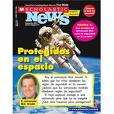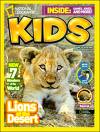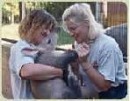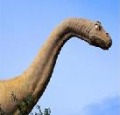Educational Links

Education Place® for Students
Free games, activities, and resources for students studying math, reading, social studies and science.
www.eduplace.com/kids/

Kids | Scholastic.com
Kids' headquarters for Clifford the Big Red Dog, Harry Potter, Captain Underpants, and Magic School Bus. Read book reviews, play games & enter contests.
www.scholastic.com/kids

National Geographic Kids
Features different people, animals, and places each month with facts, games, activities, and related links.
kids.nationalgeographic.com

Harcourt School Publishers (grades PreK–6), founded in New York City in 1919 and now headquartered in Orlando, Florida, is the basal elementary school publishing unit of Harcourt. The company develops, publishes, and markets exemplary textbooks and related instructional materials for school and home use by students in PreK through sixth grade.
www.harcourtschool.com

Online Spelling ProgramTeaching spelling is easy with SpellingCity.com. Input spelling lists for your students to use for free spelling help. www.spellingcity.com

Welcome to HighlightsKids.com!
Find fun online Hidden Pictures®, interactive games, audio stories, puzzles, e- cards, and more at HighlightsKids.com!
www.highlightskids.com
Webquests
Author: Michael Culp
Grade level/Course : Designed for 3rd grade students as an Earth Day activity, part of a unit on Environmental Education in a Science lesson; also appropriate for grades 3-5 and 6-8.
Description: Students research the advantages and disadvantages of using paper and plastic as they take on the roles of the paper advocate, the plastic advocate, the recycling pessimist, and the concerned citizen. Students design an informative poster to help local shoppers make the choice between paper and plastic bags.
Goal: This activity allows students to examine an environmental issue from different viewpoints; students learn to see things through the eyes of others. Students use critical thinking skills as they practice the art of debate and discussion to reach a consensus and apply their knowledge creatively to educate others. Students are able to see the impact of their decision in the community as they receive real world feedback.
Author: Marian Page, Justin Abell, Bernice Goodwin, Shawn Robbins-Jennings
Grade level/Course: Designed for K-2 students as part of a Social Studies or Science lesson on animals and their habitats.
Description: Animals at the Rolling Hills Zoo have escaped and headed for Dairy Queen for Blizzards. The zoo keeper is angry and does not want the animals back. Students are given the task of persuading the zoo keeper to allow the animals to return. Students use information gathered through Internet resources and use PowerPoint presentations to help the animals prove their worthiness. Students work as a team to decide on appropriate travel habitats for the safe return of the animals. Students design habitat dioramas for display and for comparison, as they take a field trip to the zoo.
Goal: This activity allows students to gain an appreciation of animals and discover the importance of preserving their habitats. Students apply this knowledge as they think about the future of these animals and their habitats. Students use critical thinking skills as they assess the value of the animals, persuade the zoo keeper, and collaborate with their teams to make choices and construct simulated habitats. Students compare their findings to real world habitats.
Author: Brian Fahey, Wilmington Friends
Grade level/Course: Designed for grades 3-5 as part of a Social Studies lesson on slavery. May also be used as a Language Arts activity on persuasive writing.
Description: Students are prompted to answer the question, "What does chocolate have to do with slavery?" Students then form teams to create PowerPoint presentations about chocolate slavery and the Ivory Coast, a country in West Africa where cocoa beans are grown. Students write persuasive letters to newspapers or chocolate companies expressing their opinions on this issue.
Goal: This activity raises students' awareness of modern day slavery, as they discover the connection between slavery and the production of chocolate. Students apply their knowledge as they educate people about chocolate slavery and write influential letters in the fight against slavery. Students are encouraged to extend their research to another modern day slavery issue - slavery in the production of carpets.
Author: Jane Ochoa-Richardson
Grade level/Course: Designed for grades K-2 as a Science lesson on animals and their needs.
Description: Students work in teams to find a snack for Paddy, the Brontosaurus. Students begin by exploring their own teeth, using Internet resources to find the names of different human teeth and their uses. Next, students explore the teeth of different animals and apply what they have learned to decide what Paddy should eat , as well as other animals based on the shape of their teeth. Teams make posters illustrating Paddy and the perfect snack.
Goal: This activity helps students see how teeth are related to diet. Students use critical thinking skills to infer the kinds of food animals eat, based on the shape of their teeth, and to illustrate their choices. The activity encourages extending this activity to other animals.
Author: Janelle Ringgenberg
Grade level/Course: Designed for third grade students as a Science lesson focusing on animal adaptations and habitats.
Description: As newly hired Environmental News Reporters, students are given the task of preparing a live broadcast covering a disaster which has severely altered a major ecosystem. Using guided Internet resources, students research various ecosystems and the animals that live there to predict what adaptations would be necessary for the animals' survival in the event of a disaster. Groups create new food chains to ensure survival.
Goal: Students discover the interdependence which exists among living things and their environments. Students use problem solving skills and creativity to determine what animals and other forms of life need to adapt to drastic environmental changes. Students are given the challenge of extending their learning as they make new predictions based on changing variables.
©Educational use only
Last updated on October 14, 2008







